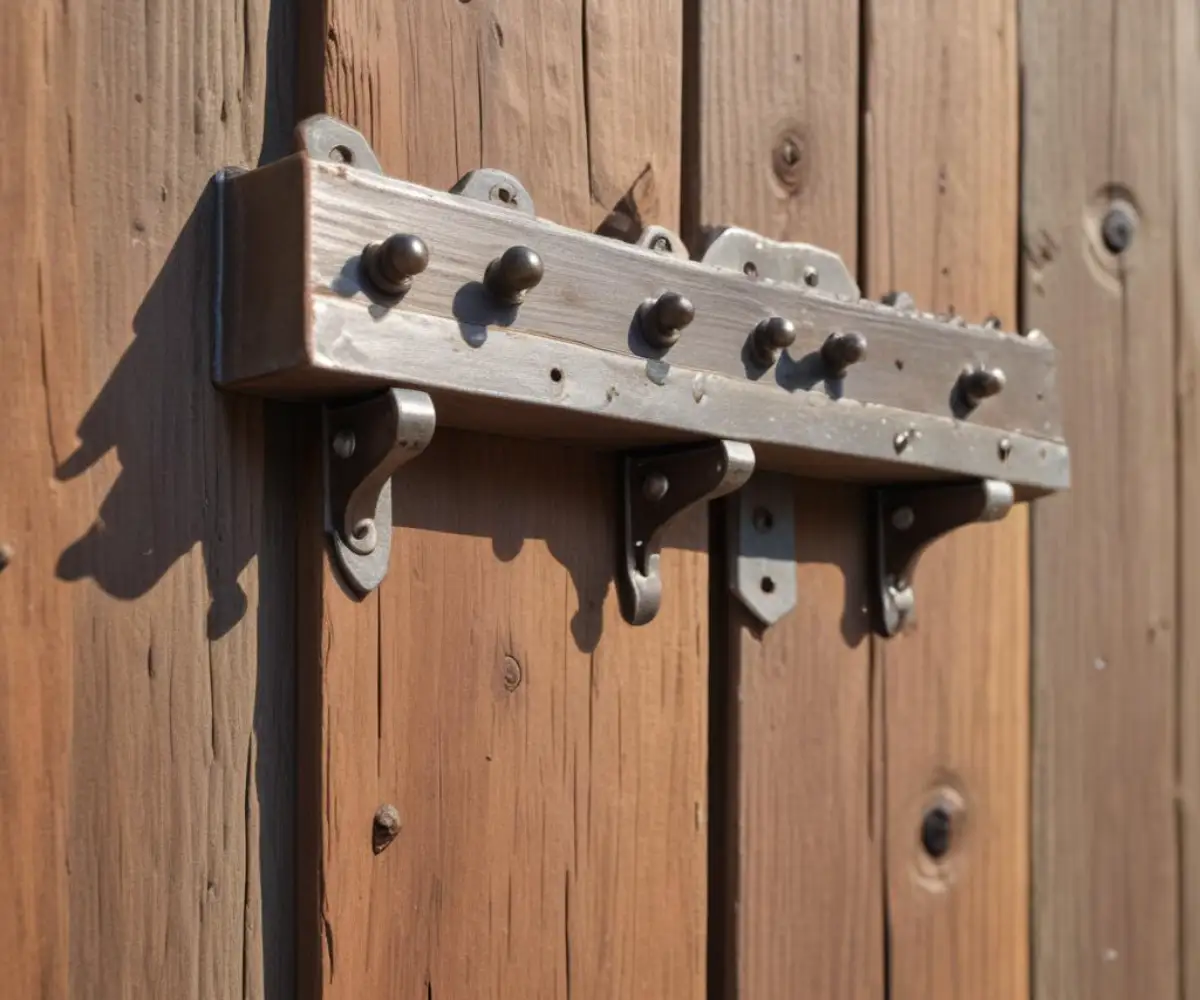Stop! That Shelf WILL Collapse: The Best Screws for Shelf Brackets
You’ve found the perfect shelf brackets, meticulously measured your space, and envisioned a beautiful display of books and cherished items. But then, a nagging thought creeps in: are the screws you’re about to use strong enough? This single, overlooked detail is often the only thing standing between a sturdy, reliable shelf and a disastrous crash that leaves your belongings shattered and your wall scarred.
Choosing the wrong screw is a far more common problem than most people realize. It’s not just about grabbing whatever is in the toolbox; it’s about understanding the physics of load, the composition of your wall, and the specific design of the screw itself. This guide will eliminate the guesswork and empower you to hang any shelf bracket with absolute confidence.
You'll Learn About
Why the Right Screw for Your Shelf Bracket is Non-Negotiable
The humble screw is the single point of failure for your entire shelving project. The forces acting on it are immense, specifically shear strength (the force pulling the screw downwards) and tensile strength (the force pulling the screw straight out of the wall). If the screw isn’t correctly matched to the wall material and the anticipated weight, it’s only a matter of time before it gives way.
Factors like the screw’s length, diameter, thread type, and material all play a critical role. A screw that’s too short won’t get a secure grip, while one that’s too thin can snap under the load. Using a fine-threaded screw in soft material is as useless as using a blunt nail on concrete; it simply won’t hold.
Decoding Your Wall: The First Step to a Secure Shelf
Before you even think about a screw, you must identify what your wall is made of. This is the most crucial step, as different materials have vastly different holding requirements. A screw that holds 100 pounds in a wood stud might not even hold a picture frame in drywall alone.
The most common wall types are drywall, plaster, masonry (brick or concrete), and wood. Drywall is a gypsum board over a frame of wood or metal studs. Plaster walls, common in older homes, consist of lath (thin wood strips) coated in plaster and can be much more brittle. Masonry walls are solid and require specialized screws and drilling techniques.
The Anatomy of a Screw: What Truly Matters for Shelf Brackets
Not all screws are created equal. Understanding their basic components will help you select the perfect one for your project. Key features include the head type (e.g., flat, pan, hex), which determines how the screw sits against the bracket, and the thread type (coarse or fine), which affects its grip in different materials.
The length and gauge (diameter) of the screw are paramount. The length must be sufficient to pass through the bracket and the wall surface (like drywall) and then penetrate deep into the structural material behind it. The gauge indicates the screw’s thickness; a higher number means a thicker, stronger screw, which is essential for heavier loads.

Matching Screws and Anchors to Your Wall Type
The combination of your wall material and the weight of your shelf dictates the ideal fastener. There is no single “best” screw; there is only the best screw for a specific application. Making the right choice prevents potential disaster and ensures your shelf remains a permanent, stable fixture.
Heavy-duty applications always demand fastening directly into a wall stud or using robust masonry anchors. For lighter loads in hollow walls, a properly selected wall anchor is not just a suggestion—it’s a requirement. Never rely on screwing directly into drywall or plasterboard to hold any significant weight.
| Wall Type | Recommended Fastener | Typical Load Capacity | Key Considerations |
|---|---|---|---|
| Drywall with Wood Stud | Wood Screw or Lag Screw | High (50-100 lbs+ per stud) | Screw must penetrate at least 1 to 1.5 inches into the stud. |
| Hollow Drywall / Plasterboard | Toggle Bolts or Molly Bolts | Medium (25-50 lbs per anchor) | The anchor’s strength is limited by the wallboard’s integrity. |
| Lath and Plaster | Wood Screws (into stud) or Toggle Bolts | Variable (High in stud, Low-Medium in lath) | Plaster can be brittle; pre-drilling is essential to prevent cracking. |
| Brick or Concrete | Masonry Screws (e.g., Tapcon) or Sleeve Anchors | Very High (100 lbs+) | Requires a hammer drill and a correctly sized masonry bit. |
Into the Stud: The Gold Standard of Shelf Support
Whenever possible, always mount your shelf brackets into wall studs. Studs are the vertical wood beams that frame your walls, typically spaced 16 or 24 inches apart. Screwing directly into a stud provides the most secure hold possible, transferring the shelf’s weight directly to the house’s frame.
Use a stud finder to locate them accurately. For a standard metal bracket against drywall, a #8 or #10 screw that is at least 2.5 inches long is a good starting point. This ensures it passes through the 1/2-inch drywall and sinks about 2 inches into the stud for maximum grip. Understanding how to properly fasten into a stud is a fundamental skill, far different from simply using an anchor. If you’re unsure, it’s worth learning more about how to put an anchor in a stud, primarily to understand what *not* to do, as anchors are designed for hollow walls, not solid wood.
Drywall Dilemmas: Anchors Are Your Best Friend
What if a stud isn’t conveniently located where you need your shelf? You must use a wall anchor. Never screw directly into drywall alone for a load-bearing shelf. The gypsum core is too soft and will crumble, causing the screw to pull out.
For medium-duty shelves, toggle bolts are an excellent choice. These have spring-loaded “wings” that open up behind the drywall, distributing the load over a much wider area. For lighter applications, self-drilling threaded anchors can be sufficient, but for shelf brackets, it’s always better to over-engineer your solution.
Brick, Masonry, and Concrete: Heavy-Duty Solutions
Hanging shelves on brick or concrete walls requires more power but offers incredible stability. The go-to fastener here is a masonry screw, often known by the brand name Tapcon. These are blue-coated, specially hardened screws that cut their own threads into the masonry.
You must use a hammer drill and a carbide-tipped masonry bit to drill a precise pilot hole first. The screw package will specify the exact bit size to use. For extremely heavy loads, such as workshop or garage shelving, expanding sleeve anchors provide an even more robust connection, locking the fastener into the wall with immense force.
Common Mistakes That Lead to Shelf Failure
Many well-intentioned DIY projects end in failure due to a few common, easily avoidable errors. The most frequent is simply using the screws that come included with the shelf brackets. These are often low-quality and too short for a secure installation in anything other than a wood stud.
Another critical mistake is not drilling a pilot hole, especially in plaster or when using large screws in wood. A pilot hole prevents the material from splitting and allows the screw to drive in more easily, creating a stronger hold. The fear of a complete system failure, much like when you notice a cabinet falling off the wall, often comes down to the initial installation and fastener choice. These same principles of secure mounting are vital.
Finally, underestimating the total weight is a major pitfall. Remember to account for the weight of the shelf itself plus the maximum weight of whatever you plan to put on it. A good rule of thumb is to choose fasteners rated for at least double your estimated load. This provides a crucial safety margin. This applies not just to a single shelf but to the entire installation, which is why it’s also important to know how to secure shelving unit to wall structures for overall stability.
Step-by-Step: A Perfect Shelf Bracket Installation
Follow these steps for a secure and level installation every time. First, determine the total load and select the appropriate screws and anchors for your wall type using the guide above. Next, use a stud finder and pencil to mark the stud locations on the wall where you plan to hang your shelf.
Hold the first bracket against the wall at your desired height, ensuring it is plumb (perfectly vertical) with a level, and mark the screw holes. Drill pilot holes appropriate for your chosen screw or anchor. Secure the first bracket, but don’t tighten the screws completely. Position the second bracket using the shelf and a level to ensure it is perfectly horizontal with the first, then mark and drill its holes. Attach the second bracket, and once you confirm everything is level one last time, tighten all screws securely. Finally, place the shelf on the brackets and secure it from below with smaller, shorter screws as needed.

